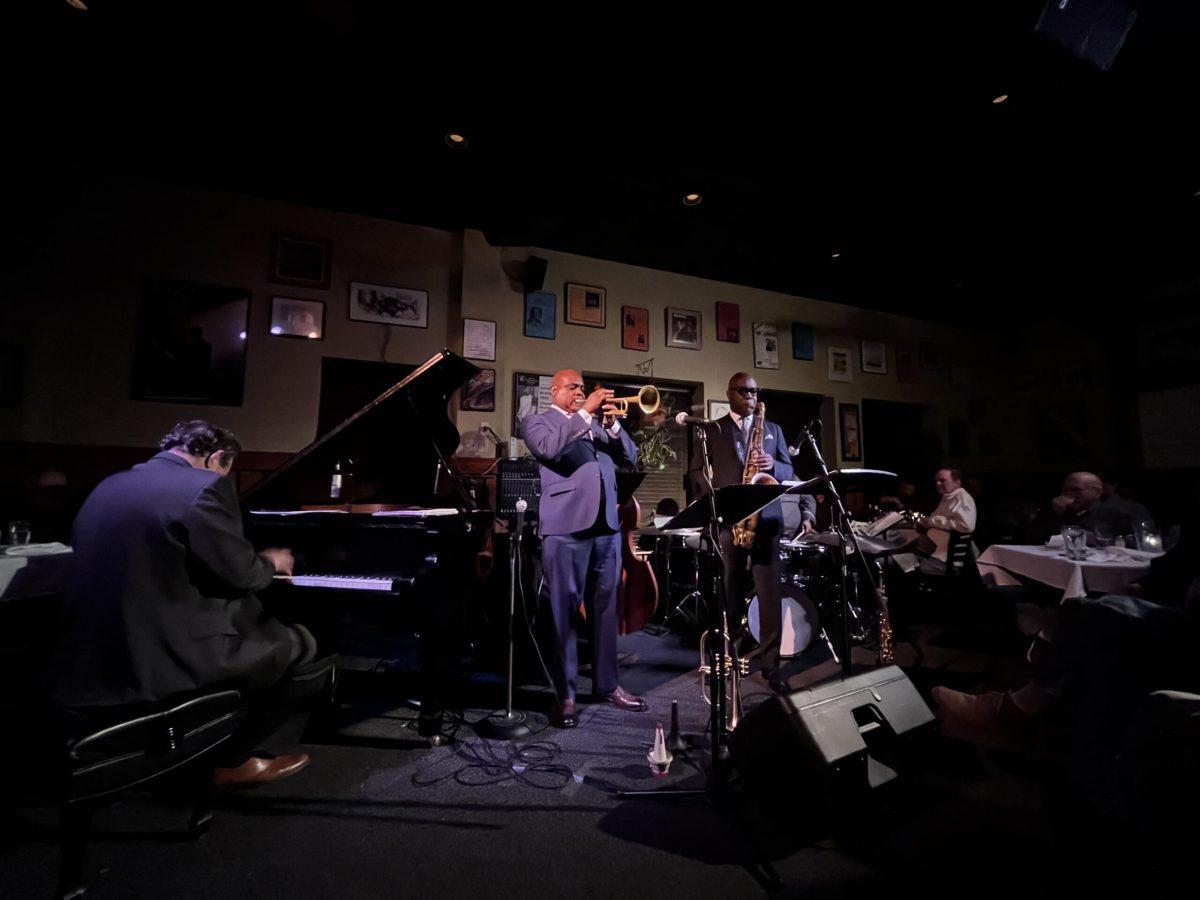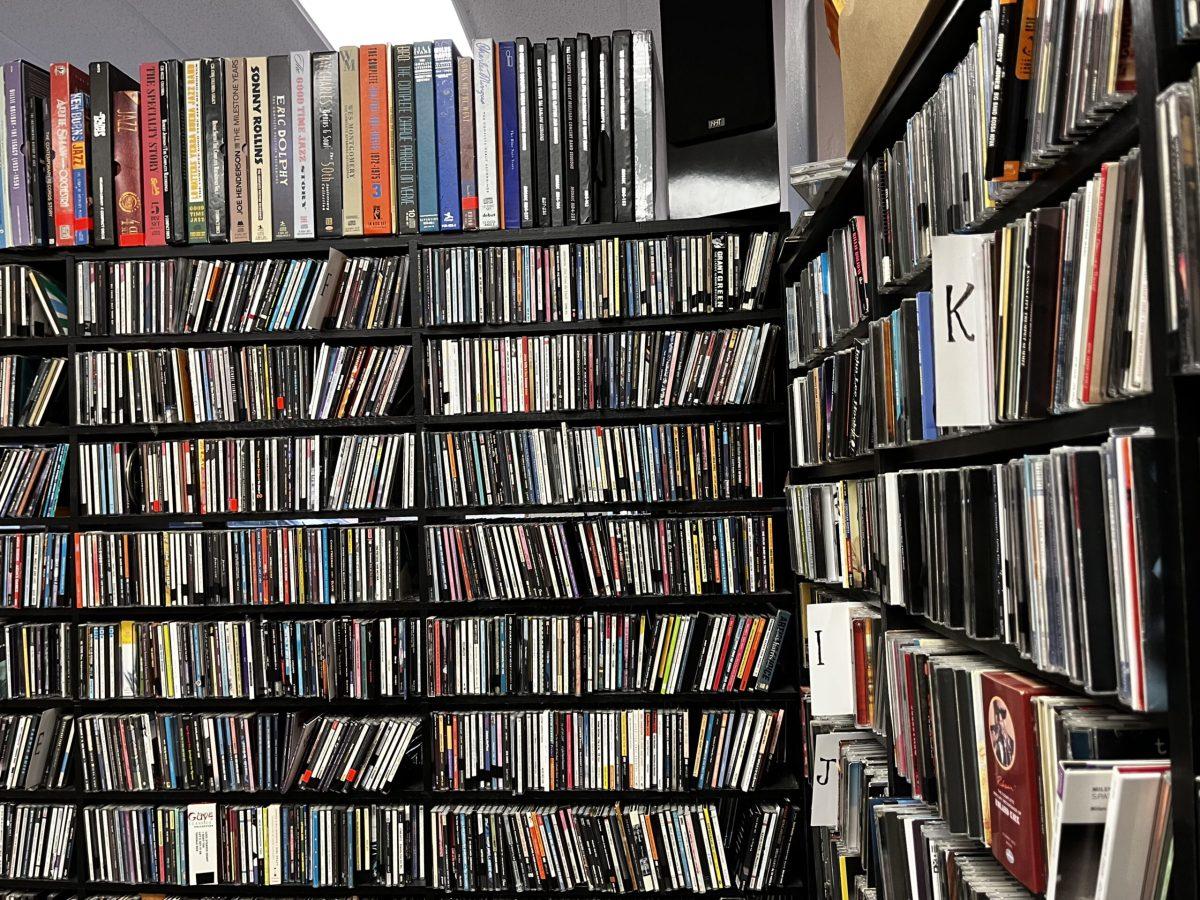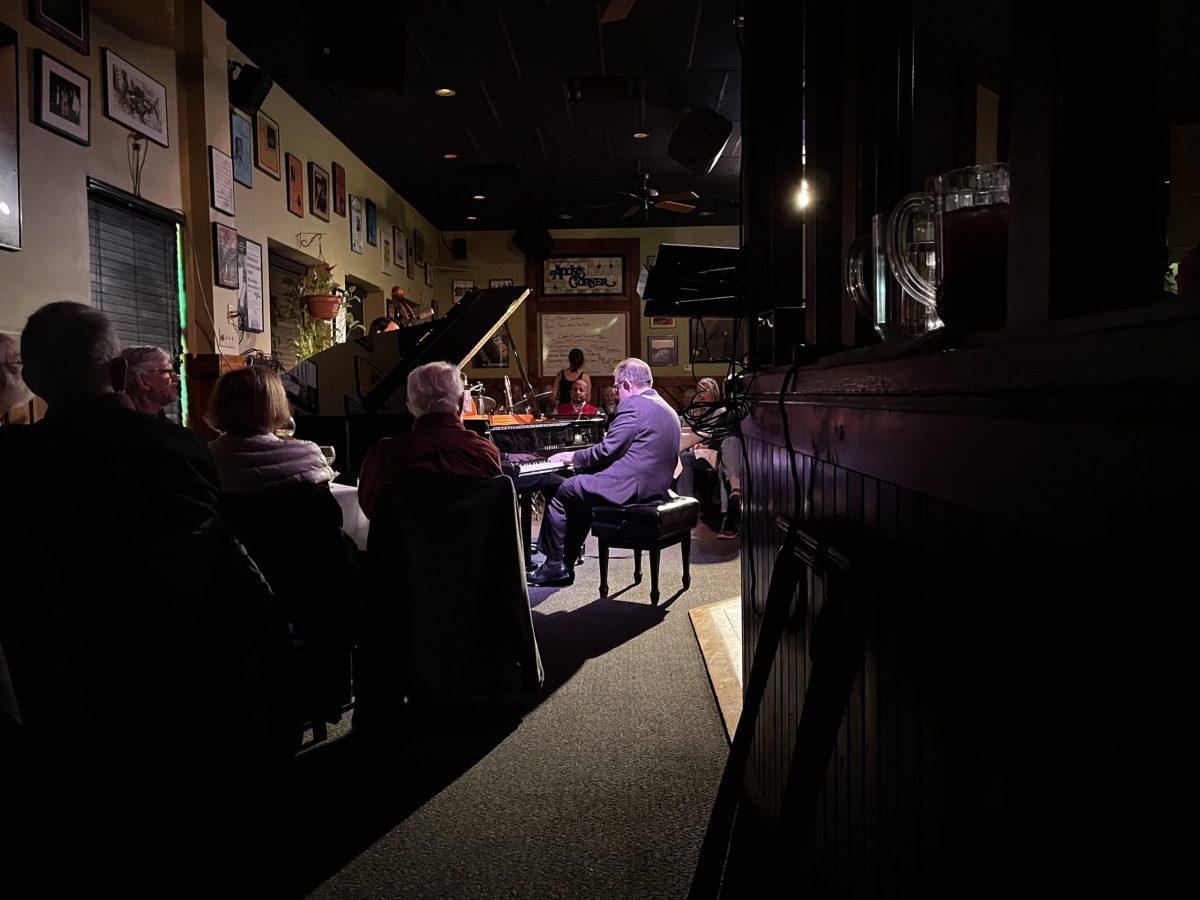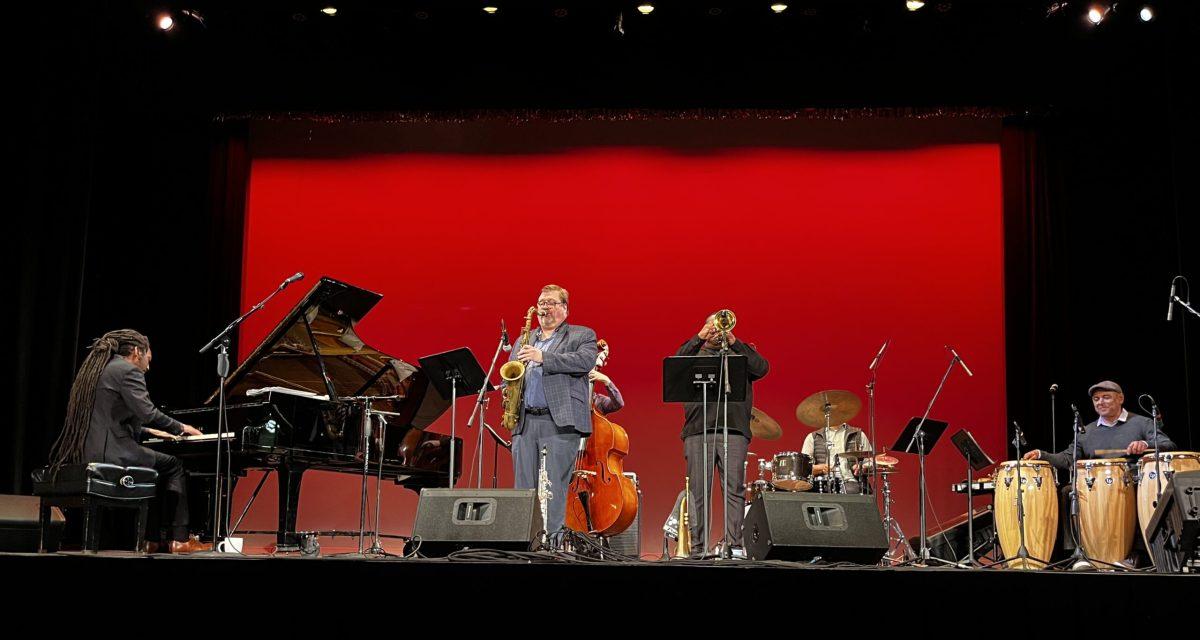The “We Always Swing” Jazz Series and other local organizations bring jazz to the public and offer incentives for youth involvement, but MU students aren’t showing up.
“Columbia, Missouri has the most jazz per capita of any place in the country.”
When grammy-nominated jazz drummer, Matt Wilson, visited Columbia for a performance, he made an observation of the mid-Missouri college town that stuck with Jack Snelling, a fifth-year music composition and geography major at MU.
Wilson isn’t far off. Within MU’s School of Music, the jazz department provides multiple jazz studies courses and ensembles. Beyond MU’s campus, there are numerous opportunities to listen to live jazz by both local and nationally acclaimed artists. The “We Always Swing” Jazz Series hosts monthly shows featuring national musicians from around the country and the world. Most of the Jazz Series’ shows are hosted at Columbia’s local jazz club, Murry’s. The club also hosts its own array of local musicians The Columbia Jazz Orchestra, also known as COJO, performs regularly at Broadway Brewery.
Yet, despite the surplus of immersive jazz opportunities around every corner of Columbia, MU student engagement is low.
Jazz makes up roughly 1.1% of the music market today, and the majority of those listeners are older in age, more specifically between 30 and 64. Across the board, listeners tend to be white, predominantly male and older.

Jazz show attendance in Columbia follows these national trends.
Josh Chittum – assistant director, box office manager and public information officer of the Jazz Series – recognizes these demographic realities regarding their shows.
“I’d be lying if I said it wasn’t mostly older white people,” Chittum said. “If you have eyes — and they work correctly — you look around the room and you can tell that.”
Regardless, various organizations and individuals in Columbia continue building opportunities for MU students to study and listen to jazz in Columbia.
“There’s a very healthy jazz scene here,” MU Director of Jazz Studies Sam Griffith said.
Griffith said that MU offers “a small but robust jazz department,” featuring a jazz minor and certificate at both the undergraduate and graduate level. According to Griffith, this coursework includes jazz arranging, jazz improvisation, jazz piano and jazz theory. The School of Music also offers multiple big-bands and combos, composed of both student musicians and professionals.

The department also collaborates with local high schools, School of Music ensembles and the Jazz Series, creating numerous performance opportunities.
In addition to offering courses for music majors, Griffith also teaches a “jazz, pop and rock” class for non-music major students. He hopes this 240-student class will inspire non-music majors to get more involved with the genre.
“Part of my hope is that in that class, there will be something where it’s like, ‘oh, my teacher says I should go to this concert and I liked that music that they played, so I’ll go,’” Griffith said.
Snelling emphasized how studying jazz can be useful to student musicians.
“In addition to it being a purely American art form, I also think it is a very pure expression of music because it requires so much communication,” Snelling said. “It requires so much intuneness with an ensemble listening to each other. Even as a solo player you’re listening to yourself constantly and responding to yourself. [It is] something that you don’t really get in classical performance quite as much because the music is right in front of you.”

Beyond MU, the Jazz Series has also worked to make tickets more accessible to students with a discounted student membership that only costs $25. This membership allows students to borrow CDs from their extensive jazz library, includes half-price tickets to select concerts and invitations to select events and priority for volunteer opportunities.
Despite the lowered prices provided by the Jazz Series and the benefit of seeing national musicians for music students, this demographic is still absent from jazz events.
“As far as why students don’t come, I wish I knew. If you’re majoring in music — even if you’re not in jazz, if you are studying classical piano — seeing Bill Charlap play would absolutely be beneficial to you,” Chittum said, referring to the Nov. 2022 Jazz Series performance from Charlap, a Grammy-award winning jazz pianist.
Ian Prinster, a mechanical engineering major at MU, currently plays saxophone in the Concert Jazz Band and in one of the school’s jazz combos.
“I think some obstacles might be price,” Prinster said. “It’s definitely easy to go to a couple of shows a semester. Also, getting there might be a difficulty if students don’t have cars. The only other one I could think of would be if students are busy with classwork – a lot of times they’re on Saturday nights or Sundays.”

Griffith believes that informing people of jazz performances and opportunities is required to evaluate why turnout is low.
“Once you see one, you realize how great it is,” Griffith said. “People usually go again and again, but I think it’s just getting them to go that first time.”
The absence of new listeners bodes ill for the already struggling art form.
“For jazz to not continue to evolve, I think would be antithetical to the essence of jazz,” Chittum said. “[Students] think of jazz as something that is a ‘was,’ not is an ‘is.’”
Although MU students do not always take advantage of the jazz opportunities accessible to them, there is still a thriving jazz culture in Columbia.
“It’s a comparatively small town, but there’s a real community of people who really love this art form,” Snelling said. “But without new, younger faces at these shows, the future of this community is uncertain.”
Edited by Egan Ward | [email protected]







